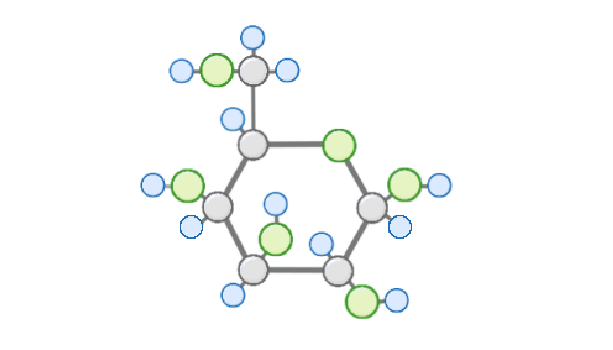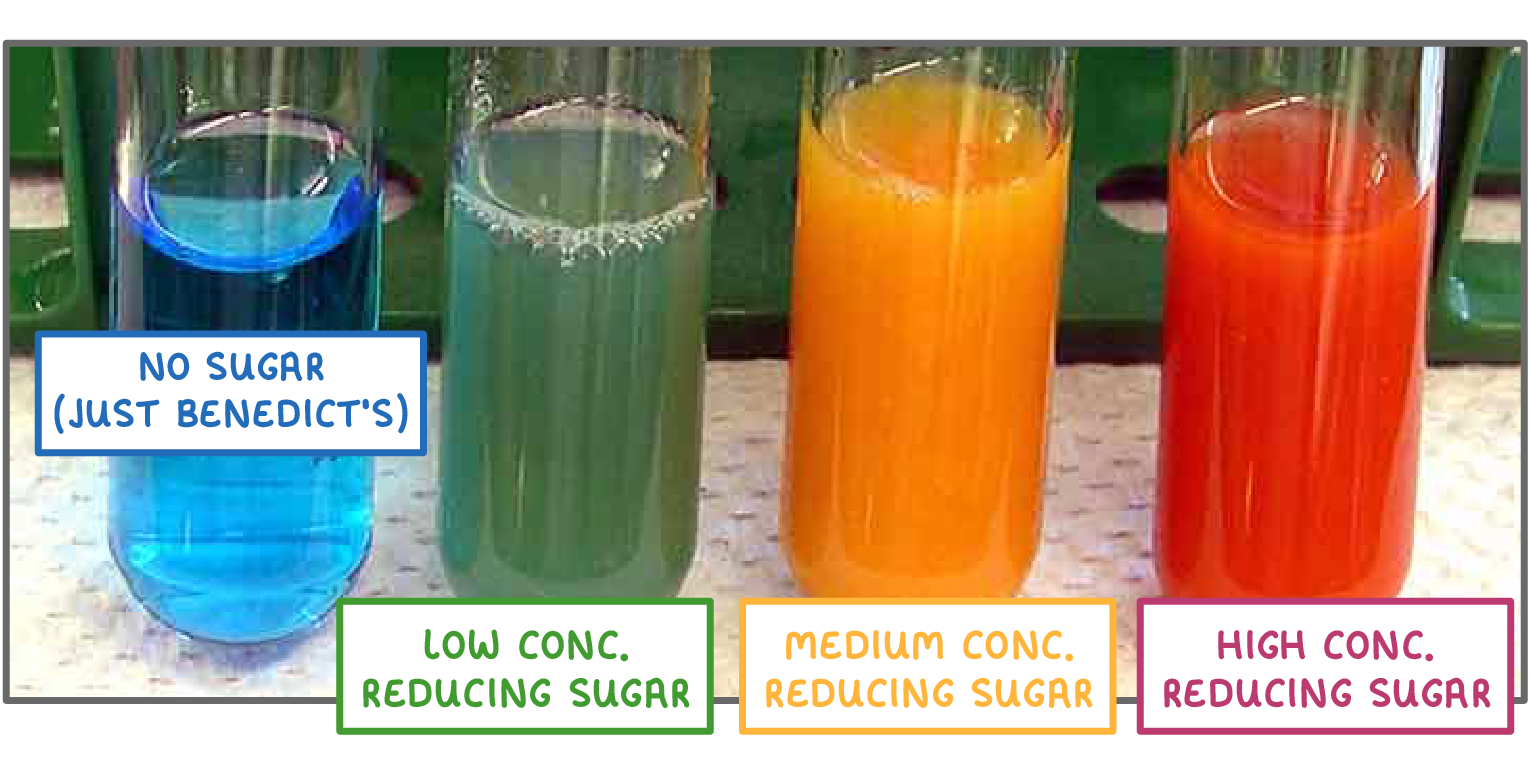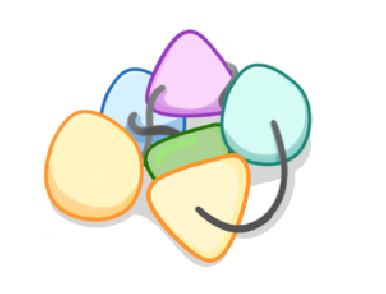Food Tests (Practical)
This lesson covers:
- How to prepare food samples for testing
- The Benedict's test for sugars
- The Iodine test for starch
- The Biuret test for proteins
- The Sudan III & emulsion tests for lipids

Which test is used to detect the presence of reducing sugars (i.e. small sugars like glucose)?
Benedict's test
Biuret test
Bronchial test
Bartholomew's test
|
Does the Benedict's test require heating the sample in a water bath?
Yes
No
|
Photos of Benedict's test

Benedict's solution itself in blue, but if reducing sugars are present then it will change colour depending on the concentration of reducing sugar.
Green indicates a low concentration of reducing sugar, orange indicates a medium concentration and brick-red indicates a high concentration.
What does iodine test for?
Proteins
Lipids
Glycogen
Starch
|
Iodine solution is used to test for the presence of starch. If starch is present, which colour change takes place?
Blue to lilac / purple
Orange to Pink
Blue to brick red
Orange to blue-black
|

To test for proteins we can use solution.
|
Biuret reagent can be used to test for the presence of proteins. If protein is present, what colour change takes place?
Orange to blue-black
Blue to lilac / purple
Blue to brick red
Orange to Pink
|
Which reagent is used to test for the presence of lipids?
Iodine reagent
Benedict's reagent
Biuret reagent
Sudan III stain
|
Sudan III test for lipids
1 / 3 / 10 / red / pink / black
- Place 5cm3 of your food sample in a test tube.
- Add drops of Sudan III stain solution.
- Gently shake.
- If a layer separates out on top, then lipid was present.
|